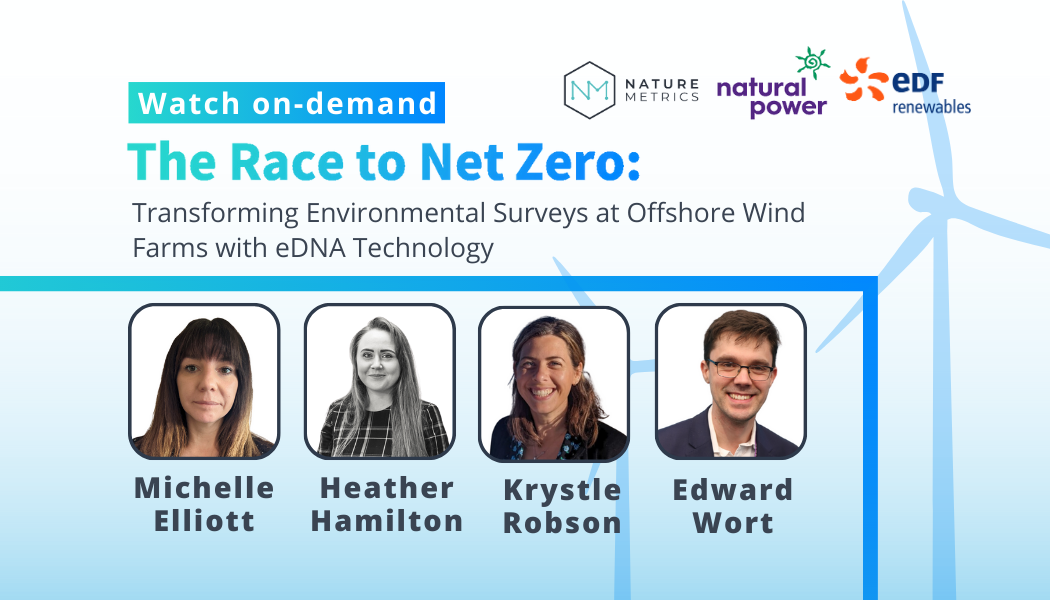The mining sector will play a pivotal role in our transition to net zero. But how do we balance the need for mineral resources with protecting nature?
NatureMetrics and Mining Technology Magazine's most recent webinar explored how mining's nature-related commitments are changing in response to new regulatory requirements.
While most large organizations now have net zero policies, "nature positive" – where organizations can demonstrate a net-positive impact on biodiversity – will become a defining call to action over the next few years.
However, Dr Joe Huddart, Biodiversity Solutions Engineer at NatureMetrics, explained that nature positive and net-zero are not mutually exclusive goals. "We're always going to need mining… and at an elevated pace now to decarbonize and to meet that climate challenge.
"But decarbonization can't come at the cost of nature. We can't rob Peter to pay Paul because they're so inextricably linked."
Voluntary frameworks move toward regulation
Following the introduction of the Global Biodiversity Framework at COP15 at the end of 2022, biodiversity regulation has continued to increase apace.
COP28 saw an increased emphasis on the link between nature and climate, with nature expected to provide 30% of the solution to reaching the Paris Agreement by 2030.
In January, the Taskforce on Nature-related Financial Disclosures (TNFD) announced that 320 companies - representing US$4 trillion in market capitalization – had committed to making nature related disclosures.
Pippa Howard, Chief Nature Strategist at NatureMetrics, commented that voluntary biodiversity frameworks such as TNFD are already influencing regulation, with mining countries like Brazil, South Africa, and Australia starting to speak the same language.
Organizations are also taking collective action. At Davos, the International Council for Mining and Metals updated their biodiversity principles and guidance to reference nature positive approaches, including a goal to "achieve at least no net loss of biodiversity at all mine sites by closure against a 2020 baseline."
"What's implicit in that is that you've got to actually know your baseline," said Pippa. "And so you need to understand what you're starting with and then how it's changing."
Defining your nature strategy
Pippa added that it's important for companies to bring nature into their decision-making.
"What's your strategy? How do you develop a response to this? Well, the first thing is that you need to understand your relationship with nature.
"So, your impact and dependencies - the kind of footprint your company has on biodiversity - is really important."
Pippa says that TNFD's LEAP (locate, evaluate, assess, prepare) assessment can help companies identify and manage any material nature risks in their portfolio.
Pippa commented that to make the right decisions, companies need to understand the specific impact of their operations: "You also need to have the kind of architecture and infrastructure in the company around your standards, your policies, and efficient targets to actually hold this all together.
"This brings us back to the location, the sites, and the site-level implications. Because biodiversity is incredibly site-specific. It's very site sensitive.
"We need to develop management responses to be able to manage that very locally."
Nature tech opens up new opportunities
New Nature Tech, such as remote sensing, environment DNA (eDNA) and bioacoustics, are helping mining companies complement existing strategies and scale monitoring at site level, and across their portfolios and value chains.
eDNA surveys allow companies to simply collect nature data at a scale that was impossible using traditional methods.
Joe said: "This ability to essentially have anyone go into the field and collect an environmental sample – soil, water, even air, which is really exciting ¬– and collect data on anything from bacteria all the way up to blue whales really is extraordinary."
NatureMetrics can then combine geospatial data from environmental layers ¬– such as water, vegetation and elevation –– with data from site surveys to make biodiversity predictions before there are even boots on the ground.
Taking action
NatureMetrics has extensive experience in the mining sector, working with organizations such as Anglo American and Rio Tinto across a global portfolio of sites and ecosystems.
Providing comprehensive biodiversity data to inform ecological management from the earliest point of mineral exploration to reclamation and mine closure.
Joe concluded: "If we can encourage… people to adopt digital platforms that allow us to manipulate time series data in real-time, it's so compelling. You're able to sit there with your CEO… and show the results of the efforts your company has employed to improve environmental performance."
For more insights, dive into the full webinar now available on demand.


%20(2).png)

-2.png)
%20(250%20x%20250%20px)-2.png)
.jpg)

%20(1).png)